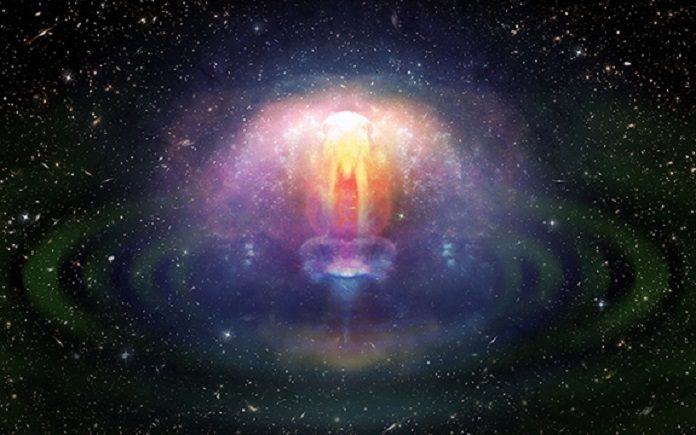Using a collection of National Science Foundation radio telescopes, Caltech scientists now confirmed that a superfast jet had been produced by the neutron star collision. They have confirmed that a narrow jet of material was ejected at near light speeds from a neutron star collision.
Scientists observed this collision on August 17, 2017, that occurred 130 million miles away from Earth. At that time, using Laser Interferometry Gravitational-wave Observatory (LIGO), scientists observed that the collision had produced gravitational waves alongside a flood of light in the form of gamma rays, X-rays, visible light, and radio waves. That was the first cosmic event to be observed in both gravitational waves and light waves.
Scientists now concluded this after radio astronomers found that a region of radio emission made by the merger had moved in an apparently inconceivable manner that can be only explained by jet.
Kunal Mooley, a Caltech postdoctoral scholar with a joint appointment at the NRAO said, “We measured an apparent motion that is four times faster than light. That illusion, called superluminal motion, results when the jet is pointed nearly toward Earth and the material in the jet is moving close to the speed of light.”
Assistant Professor of Astronomy Gregg Hallinan said, “We were lucky to be able to observe this event because if the jet had been pointed too much farther away from Earth, the radio emission would have been too faint for us to detect.”
The radio observations were made using the Very Long Baseline Array (VLBA), the Robert C. Byrd Green Bank Telescope (GBT), and the Very Large Array (VLA). The VLA is operated by the National Radio Astronomy Observatory (NRAO), which is closely associated with the other two telescopes involved in the discovery.
Superfast jets are known to give rise to intense, short-duration gamma-ray bursts or GRBs, predicted by theorists to be associated with neutron star collisions. The observation of a jet associated with this collision is, therefore, an important confirmation of theoretical expectations.
The aftermath of the merger is now also better understood: the jet likely interacted with surrounding debris, forming a broad “cocoon” of material that expanded outward and accounted for the majority of the radio signal observed soon after the collision. Later on, the observed radio emission came mainly from the jet.
